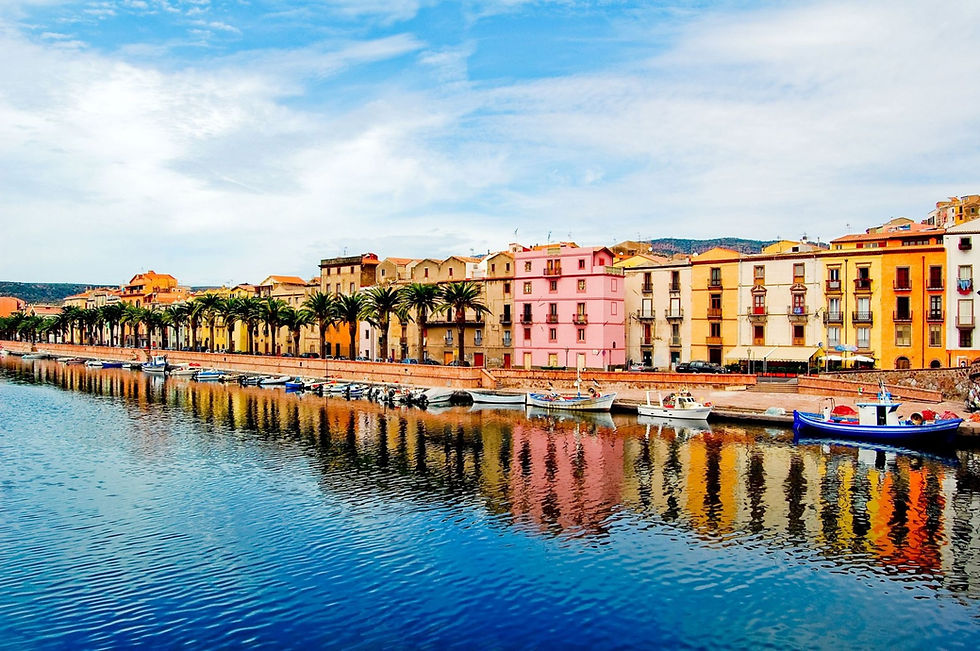Sardinia
- Aug 26
- 2 min read
Updated: 4 days ago
The Jewel of the Mediterranean

Geography and Administration
Sardinia is the second-largest island in the Mediterranean Sea, coming after Sicily. As an autonomous region of Italy, Sardinia covers a total area of 24,090 square kilometers and is home to a population of 1.6 million people. The capital city is Cagliari, and the island is divided into eight provinces: Cagliari, Carbonia-Iglesias, Medio Campidano, Nuoro, Ogliastra, Olbia-Tempio, Oristano, and Sassari.

Coastal Beauty and Seaside Landscapes
The coasts of Sardinia are famously jagged and rocky, with turquoise waters and white sandy beaches that rival the most stunning tropical destinations. The seaside landscapes, particularly those along the Costa Smeralda, are considered among the most beautiful in the world. Off the southwestern coast, the islands of Sant'Antioco and San Pietro offer charm and hospitality in an environment that remains largely unspoiled. Many coastal townships, especially outside the tourist peak, are nearly deserted and provide perfect conditions for photography enthusiasts, as seen in the gallery featuring the Houses of San Giovanni Di Sinis.
Historic Sites and Ancient Heritage
Sardinia boasts a rich and fascinating history. Scattered throughout the island are approximately 7,000 nuraghi—truncated cone-shaped towers built from large stone blocks, which served as the fortified dwellings of Sardinia's earliest inhabitants. The island is also home to significant Roman ruins found at Tharros on the western side, as well as relics at Porto Torres and Cagliari.

Rural Landscapes and Towns
The rural scenery of Sardinia is equally striking, featuring forested mountain peaks, valleys filled with citrus groves, and lush pastures where cattle and sheep graze contentedly. The town of Alghero, located in the northwest, has a unique Catalan history and a delightful historic centre. Cagliari, the capital, blends old-world charm with the energy of a cosmopolitan city, where ancient traditions meet modern life. The most significant event in Cagliari is the festival of Saint Efisio, an annual procession commemorating the city’s guardian saint.

Local Food and Culinary Traditions
Sardinian cuisine is deeply rooted in local traditions, with typical offerings varying from place to place but generally revolving around themes of bread, lamb, cheese, honey, select vegetables, wines, and almond pastries—a legacy of the Moorish presence centuries ago. The food is always fresh, flavourful, humble, and proudly served.

Sardinia is renowned for its outstanding cheeses, particularly those made from ewes’ milk—known as Pecorino, though each variety has its own distinct character. Other notable cheeses produced in Sardinia include Casizolu and Fiore Sardo.

Wine Varieties
The most popular grape varieties in Sardinia are Cannonau and Vermentino. Other varieties grown on the island include Carignano, Malvasia, and Moscato di Sorso Sennori.






Comments